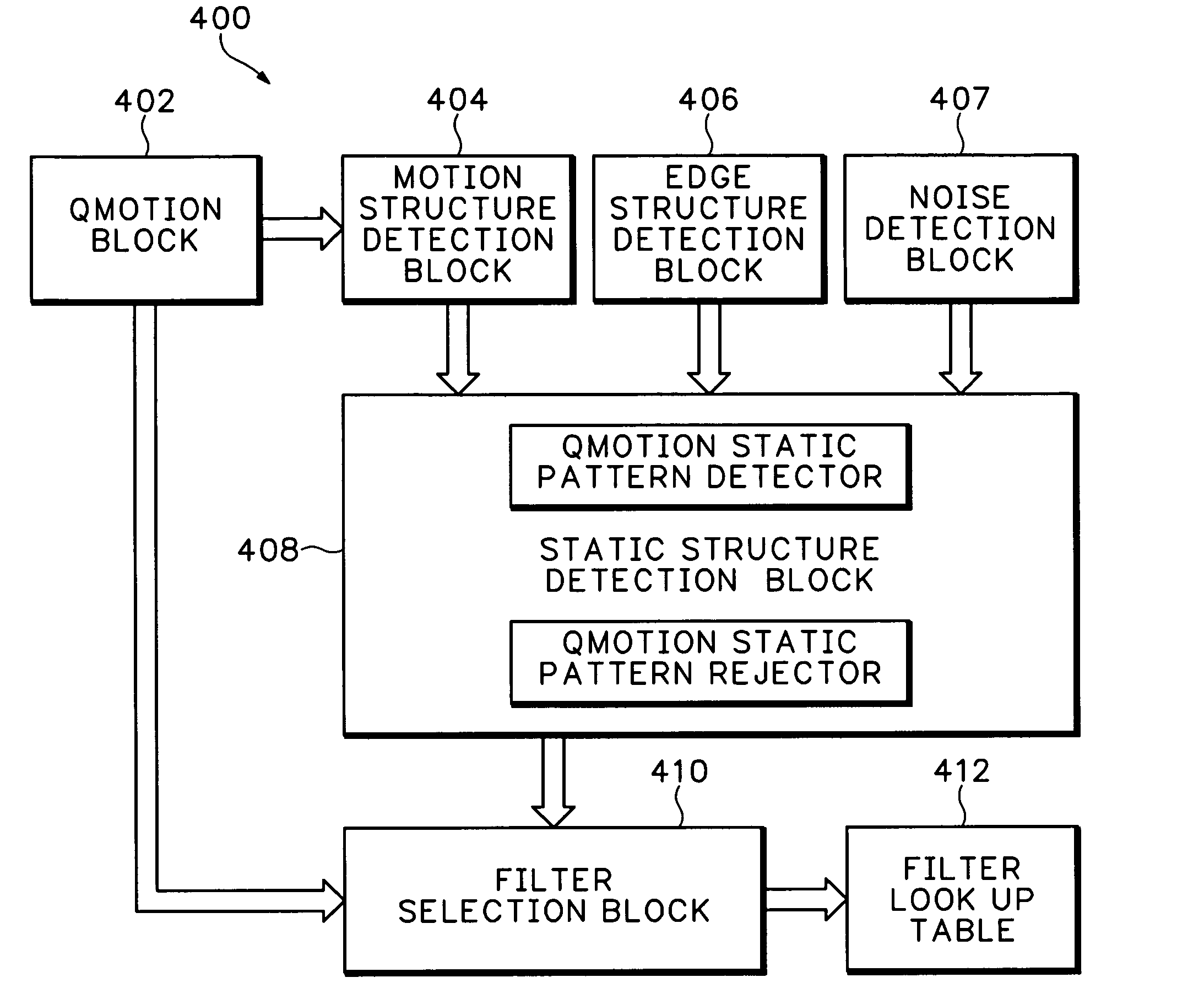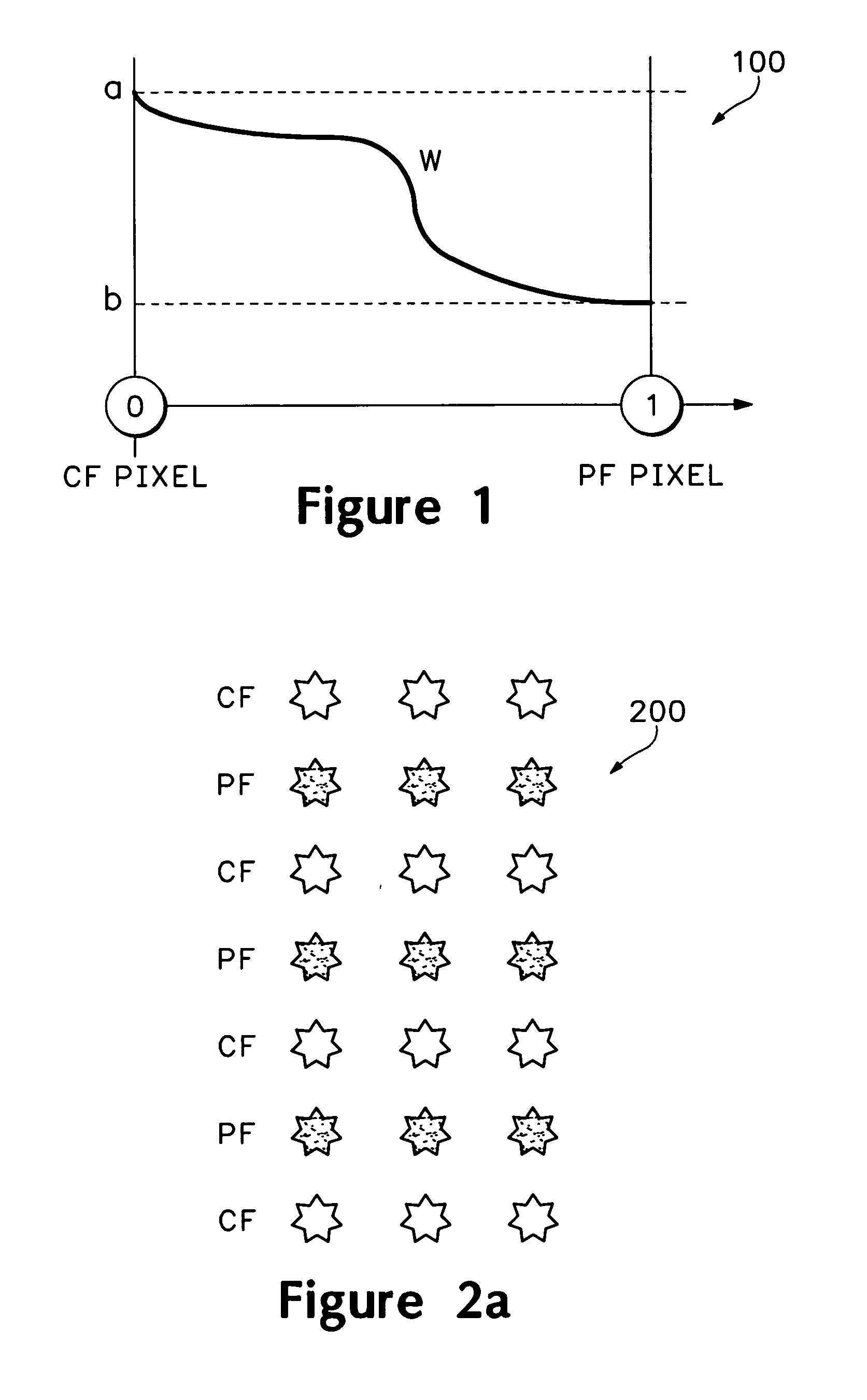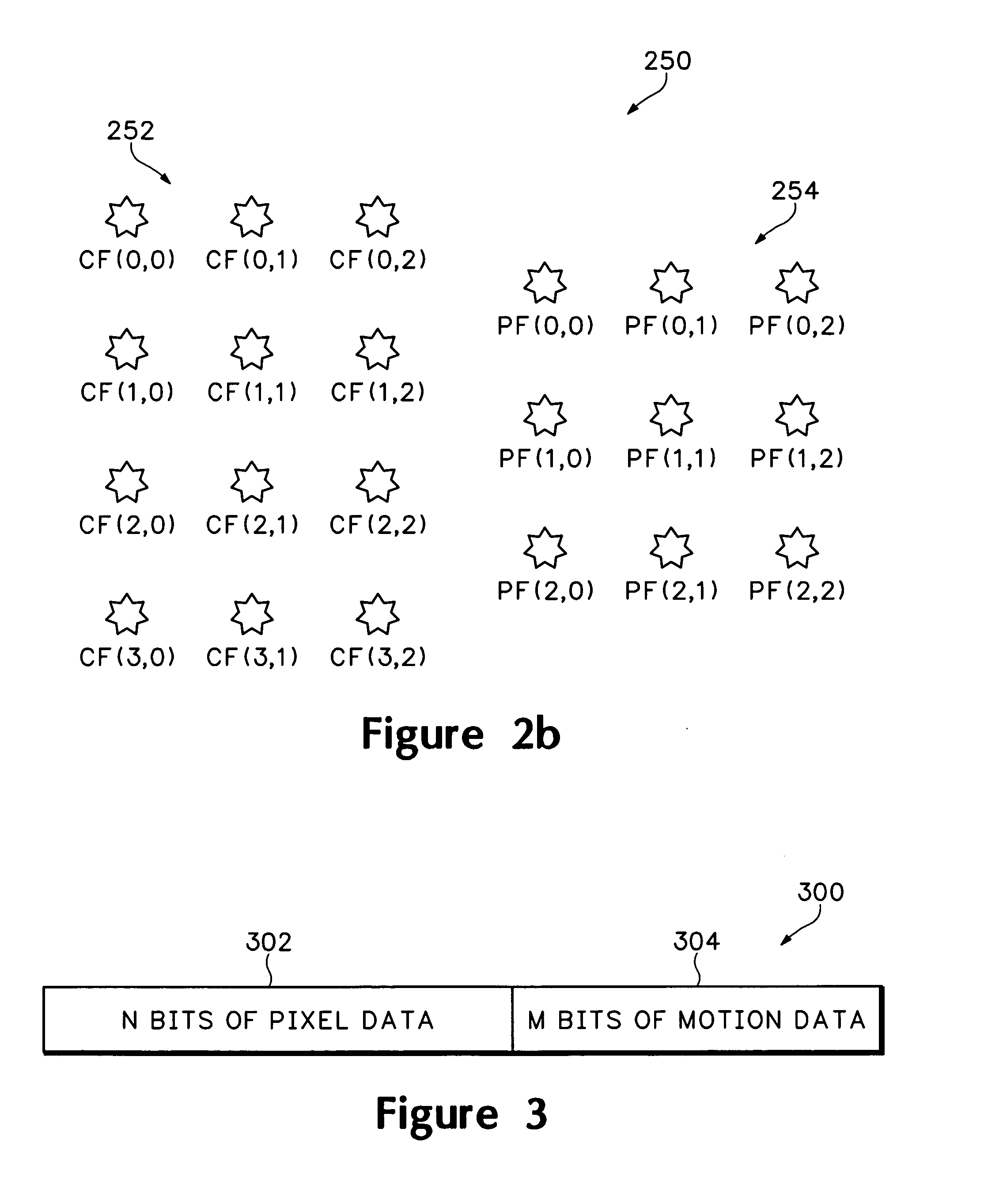Method and apparatus for motion adaptive deinterlacing
a technology motion, applied in the field of motion adaptive deinterlacing, can solve the problems of loss of vertical detail, information shortfall during format conversion, abhorrent visual quality, etc., and achieve the effect of improving feathering detection
- Summary
- Abstract
- Description
- Claims
- Application Information
AI Technical Summary
Benefits of technology
Problems solved by technology
Method used
Image
Examples
Embodiment Construction
[0036] The following description can be applied to a method of format conversion for interlaced-to-progressive scan conversion (deinterlacing) and a method of interlaced-to-interlaced conversion (reinterlacing) that simultaneously scales and deinterlaces or scales and reinterlaces. The latter is a requirement for format conversion where the source image format and the target image format are not necessarily the same. The methodology used is based on what will be referred to as motion-adaptive vertical-temporal (MAVT) filtering.
[0037] MAVT filtering uses inter-field interpolation to compute a target pixel value. That is, image pixel data is combined from both the current field (CF) and the previous field (PF) to compute the target pixel. In addition, information derived from several past fields is used to assist the decision making process.
[0038] The MAVT filtering approach described herein emphasizes either the CF pixel data or the PF pixel data, depending on the degree of estimat...
PUM
 Login to View More
Login to View More Abstract
Description
Claims
Application Information
 Login to View More
Login to View More - R&D
- Intellectual Property
- Life Sciences
- Materials
- Tech Scout
- Unparalleled Data Quality
- Higher Quality Content
- 60% Fewer Hallucinations
Browse by: Latest US Patents, China's latest patents, Technical Efficacy Thesaurus, Application Domain, Technology Topic, Popular Technical Reports.
© 2025 PatSnap. All rights reserved.Legal|Privacy policy|Modern Slavery Act Transparency Statement|Sitemap|About US| Contact US: help@patsnap.com



